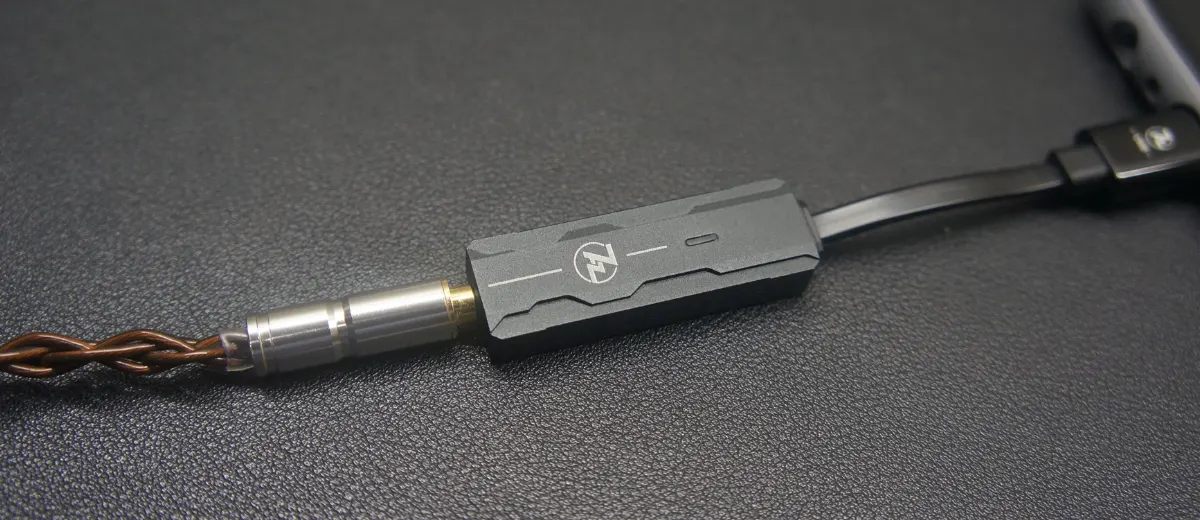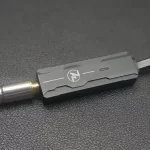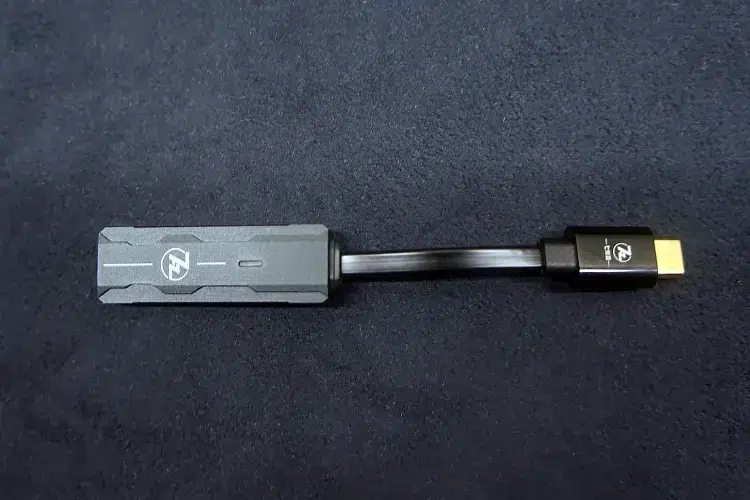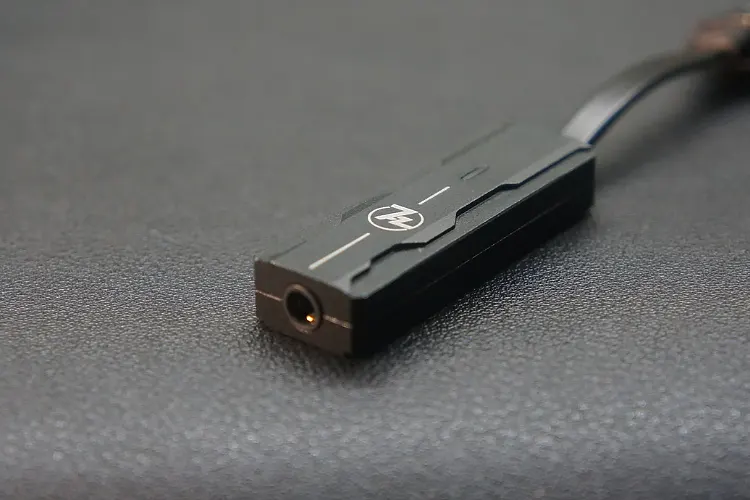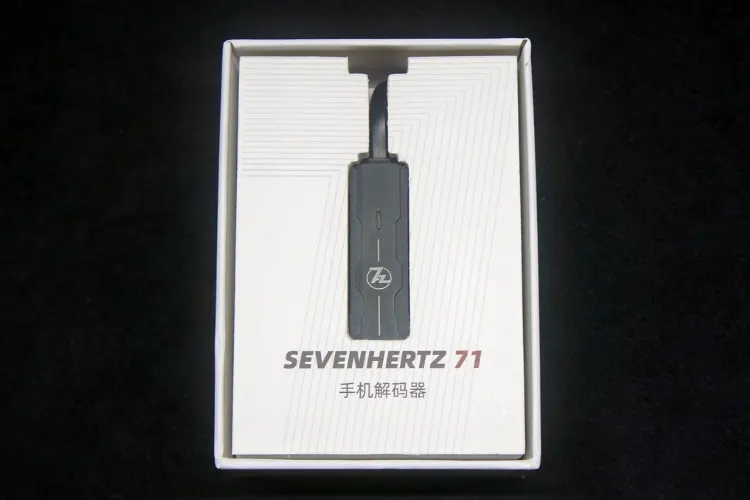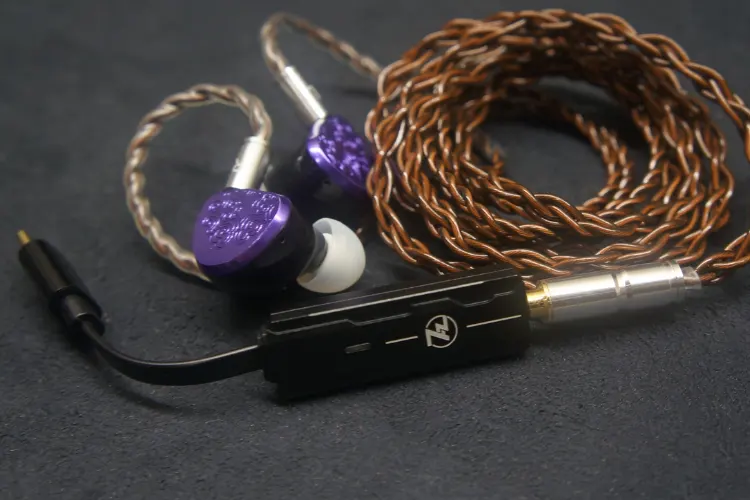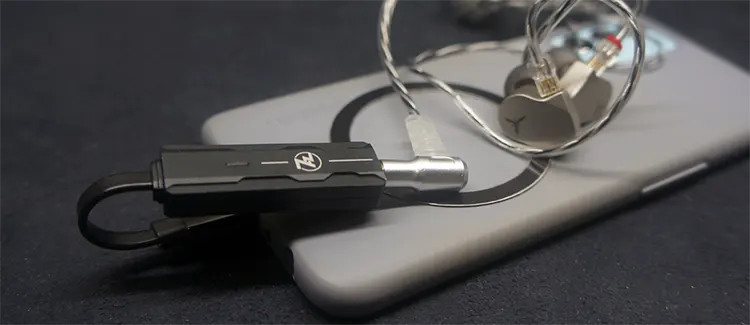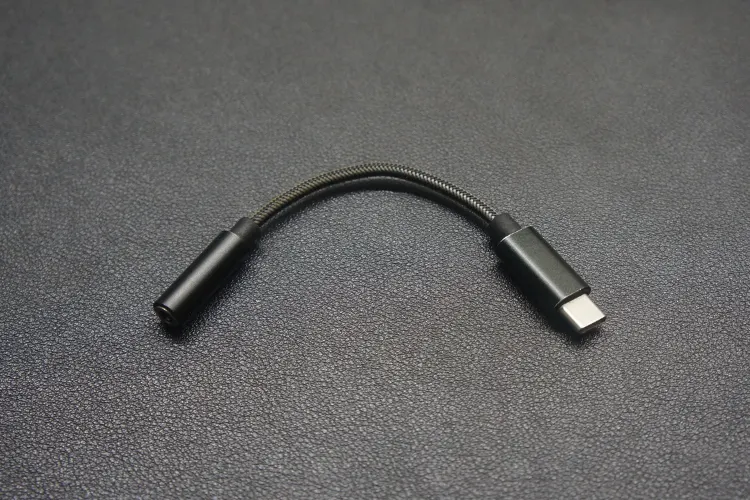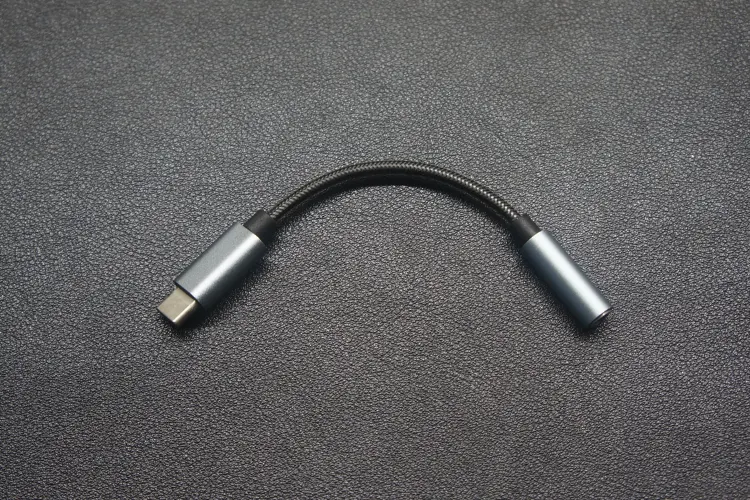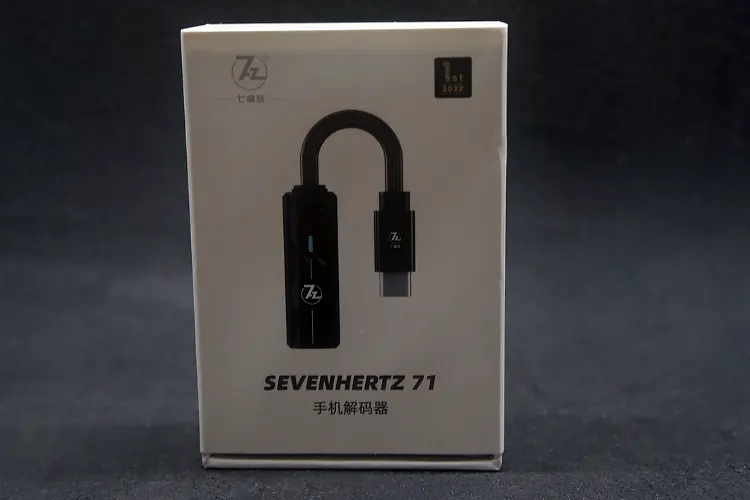Today, we review the 7Hz SEVENHERTZ 71, which is an Android and iOS-compatible entry-level integrated dongle-style portable DAC and amplifier. It is priced at $35.
Disclaimer: This was sent to us as a sample for our honest opinion. Headfonics is an independent website with no affiliate links or services. We thank the team at Linsoul for giving us this opportunity.
To read more about 7Hz products we have previously featured on Headfonics click here.
Note, that this article follows our latest scoring guidelines which you can read up on here.
7Hz, the company most audiophiles known for their very popular Timeless and Eternal IEMs has just entered the extremely competitive dongle DAC market with its new SEVENHERTZ 71 dongle DAC.
Combining an impressive AK4377 DAC chip at a $35 price point is no easy feat, but let’s see if the SEVENHERTZ 71 can stand out among the rest of the pack.
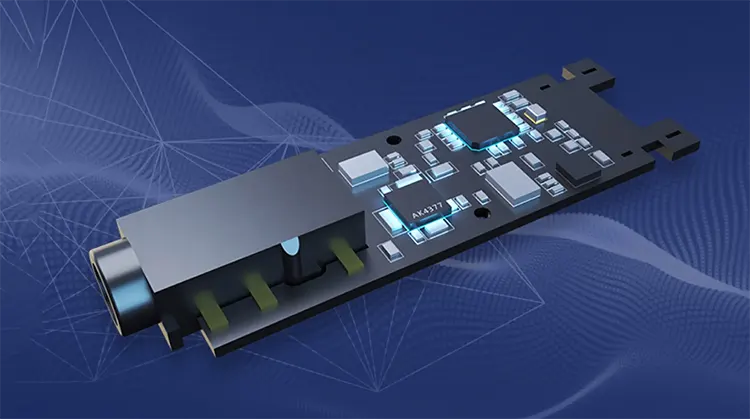
Tech Highlights
The SEVENHERTZ 71 houses an AKM AK4377 DAC chip. This is the same chip used in the older FiiO M5 DAP and the Lotoo Paw S1, a dongle DAC that when new, retailed for around 5 times the asking price of the 7Hz.
This gives it the ability to decode files up to PCM 32BIT/384kHz and even DSD128 files, a nice to have for burgeoning audiophiles who may be curious to try DSD audio files. Unfortunately, it does not support MQA unfolding of any kind.
Additionally, the cable connecting the main body of the unit to the USB-C connector is made of high-purity 36-core Silver plated OCC copper, ensuring minimal signal degradation.
Design
The main body of the SEVENHERTZ 71 is encased in a CNC-machined aluminum shell with a sharp black powder-coated finish. The unit feels dense and has a good heft to it, but it is still light enough not to impede regular portable usage.
Towards the front of the unit, there is a small LED, and below that is the 7hz logo engraved onto the case.
The ridges on the unit obstruct the otherwise clean silhouette of the unit, but it does give it a gamer aesthetic that may not necessarily be to everyone’s taste.
At the top of the SEVENHERTZ 71 is a non-detachable USB-C ribbon cable for connecting the dongle to a source device. On the other end of the cable is a gold-plated USB-C connector encased in a hard plastic shell with another stylized 7hz logo.
Towards the bottom of the SEVENHERTZ 71 is its single 3.5mm SE output for connecting IEMs, earbuds, and headphones. The back of the unit has 4 exposed Torx screws that sandwich the two metal halves of the casing.
I/O
The SEVENHERTZ 71’s I/O is as simple as they come. The unit does not have any external volume controls, gain switches, or buttons.
The USB-C male connector at the end of the attached ribbon cable is its sole input, whilst the 3.5mm SE out on the bottom of the metal housing is its sole output.
It is also important to note that the SEVENHERTZ 71 is compatible with iOS devices, however, it would necessitate the purchase of an additional USB-C to lightning adapter.
Additionally, there is an LED that shines blue when playing PCM content and shines amber when playing DSD content.
The SEVENHERTZ 71 is compatible with devices running Android 5.1 or newer. In some phones such as my Realme GT Master, you may need to manually turn on the OTG connection setting when plugging in the device.
Packaging & Accessories
The 7hz SEVENHERTZ 71 dongle DAC has extremely simple, no-frills packaging. The front of the white outer sleeve has an image of the 71, whilst the rear has an exploded view that shows the circuitry housed within the metal shell.
Opening the sleeve shows the SEVENHERTZ 71 neatly tucked in an indented cutout, covered by a hard layer of see-through plastic. The packaging does its job of protecting the unit when in transit, but that’s all it really does.
The package comes with just the unit, and a basic product data sheet listing the key specifications of the unit. Any adapters you may need must be purchased separately.
Sound Impressions
Summary
One of the main things that stand out with the SEVENHERTZ 71 is its excellent dynamics for the price. Perhaps because of the low-end bump, but instruments feel full and uncompressed, whilst not adding too much coloring.
The unit’s low SNR makes it perfect for sensitive IEMs that require a little bit more power to truly maximize their dynamics.
Timbre
The 7hz SEVENHERTZ 71 has a neutral-sounding timbre with a slight bump in the bass region. Unlike other DACs with a more bass-focused timbre, I wouldn’t call the SEVENHERTZ 71 warm, instead, it sounds like a neutral timbre with a slight and somewhat sharp EQ boost in the bass region.
Bass drums and 808 tones in Hip-Hop music are elevated, however, this boost is not replicated in bass guitar strums. Bass drums hit with a good slam without disrupting the overall tonal balance. It is also worth highlighting the 71’s ability to present the decay of bass drum notes in a natural-sounding manner.
The vocal presentation of the SEVENHERTZ 71 is unoffensive, it does not add any coloration whatsoever, nor does it recess the vocals.
It is worth mentioning that the neutral timbre gives it a better vocal presentation than other warmer-sounding DACs such as the VE Megatron. The unit does a good job of properly representing the vocal performance that a pair of IEMs or headphones are capable of.
The SEVENHERTZ 71 has a very clear and analytical presentation of the high-end. What initially stood out was how it was able to articulate hand-percussive instruments such as maracas and cabasa.
Its more analytical presentation leads it to be sibilant at times, but it is exceptional at properly articulating the detail on the high end without elevating it to a painful degree.
Staging and Dynamics
The SEVENHERTZ 71 unit has very good staging performance when paired with lower-powered IEMs and headphones. When listening with the new MOONDROP LAN, it can present a sense of width similar to more expensive desktop DAC/AMPs.
However, it is not able to replicate the same soundstage performance on harder-to-drive headphones such as the Sennheiser HD 580 Precision.
Its dynamics are excellent. When doing A-B comparison testing between the unit and the onboard 3.5mm output of my phone and laptop, the first thing I noticed was how much better the dynamics are. Each instrument feels less compressed, making onboard audio seem dynamically flat.
Synergy
Power & Efficiency
The unit outputs at 1Vrms which translates to around 70mw into 32Ω. From a pure numbers standpoint, this may not seem like a huge jump from the competition.
However, it is more than capable of driving planar magnetic IEMs such as the Tangzu Wu ZeTian, and is even capable of driving some easier-to-drive headphones such as the Koss KPH30i.
When it comes to harder-to-drive full-sized headphones, they can power HD 580s to a reasonable listening level, but it starts to distort, and the highs become harsh and metallic sounding. Needless to say, I would not recommend driving full-sized 300Ω headphones with the 71.
Its low SNR makes it perfect for sensitive IEMs such as the Moondrop LAN and Tripowin Olina SE, wherein I detected no hiss, and rarely go beyond 75% during regular use with my smartphone.
Pairings
Based on my testing, the best pairings with the 7Hz SEVENHERTZ 71 are sensitive IEMs that, on their own, feel lacking in the bass region. Amongst the IEMs I tested, I found that the unit paired the best with the Moondrop LAN.
The LAN can easily be driven by the onboard audio of Laptops and smartphones, but its dynamics greatly benefit from additional power. And with my library, I tend to find the default bass response of the LAN to be a bit lacking.
Select Comparisons
Not-By-VE Abigail
Technical
The Abigail and the SEVENHERTZ 71 are built on different DAC chips. The Abigail has the Conexant CX31933 DAC chip seen in many budget dongle DACs, while the SEVENHERTZ 71 houses the higher-end AKM AK4377 DAC chip. Both DACs are capable of decoding PCM 32-384, but only the SEVENHERTZ 71 can decode DSD files.
Both units have a single USB-C male input and a single 3.5mm SE output. Through this output, the Abigail can produce up to 65mw @32Ω, while the slightly more powerful SEVENHERTZ 71 is able to drive up to 70mw @32Ω.
Design
Despite both DACs falling under the “dongle” category, they still have their own fair share of differences.
The Abigail is smaller since it doesn’t have a main “body” that hangs off the main cable. Instead, the DAC chip is integrated onto the slightly elongated USB-C jack.
The cable itself is made of SPC wrapped around a thick braid. It has the same feel as a paracord cable, giving it a very durable feel.
While the SEVENHERTZ 71 feels like a lightweight DAC unit that hangs off a source phone or laptop, the Abigail feels like a cable extension connected to the end of IEMs or Headphones.
Performance
The sound signature of the SEVENHERTZ 71 and the Abigail vary substantially, wherein the Abigail is much warmer in comparison. The strums of the bass guitars are much more evident, and the vocals and cymbal strikes are significantly more recessed. Despite this, both the Abigail and SEVENHERTZ 71 still sound natural, without any tones sounding “artificial”.
The SEVENHERTZ 71 is significantly more dynamic and has a more evident bass punch. When listening to a Hip-Hop track, the bass is the first thing that stands out. Listening to the same track yields different results with the Abigail, where the bass hits feel much more deflated.
The mid-range on the Abigail is much more recessed which also decreases the overall vocal clarity. Despite the overall warmer tonality, even deep male vocals sound recessed when compared to the 71.
The highs on the Abigail are its weakest trait when compared to the 71. Cymbal strikes and piano tones that sound crisp and detailed on the SEVENHERTZ 71 lose almost all their detail on the Abigail.
Staging is similar between both units, but the improved dynamics of the SEVENHERTZ 71 give it a better sense of imaging as compared to the Abigail.
Not-By-VE Avani
Technical
Despite being similar in price and design to the Abigail, the Avani houses a different DAC chip inside. The Avani’s dongle is built on the Realtek ALC5686 DAC, whilst the SEVENHERTZ 71 houses the AKM AK4377 DAC chip.
Similarly, to both the SEVENHERTZ 71 and the Abigail, the Avani is capable of decoding PCM 32-384, but only the SEVENHERTZ 71 can decode DSD files.
Both units have a single USB-C male input and a single 3.5mm SE output. There is not much information on the power rating of the Avani on the internet, but what is known is that it outputs at 1Vrms, like the Abigail dongle.
Design
Aside from the color of the metal housing, the build, dimensions, and design of the Avani dongle are identical to that of the Abigail dongle.
The Avani is constructed with the same metal housing around the USB- connector, and the same braided material around the SPC cable. The Avani feels just as light weight as the Abigail and is lighter than the 71.
Performance
The sound signature of the Avani is quite like the 71, only with a slightly less elevated bass bump, and a more elevated high-end response. Cymbal strikes and piano keys stood out in all the tracks I tested.
The SEVENHERTZ 71 still has a more dynamic presentation, however, the dynamics of the Avani are better than that of the Abigail. Additionally, the Avani doesn’t have the same slam that the SEVENHERTZ 71 is capable of.
The mid-range performance of the Avani is clean and neutral. Vocals, especially higher-pitched female vocals, are clear and very well-detailed.
The high-end performance of the Avani is its strong suit, being able to place the cymbals and hand percussive instruments at the forefront. The texture and detail of these instruments are translated exceptionally as well.
Our Verdict
The 7Hz SEVENHERTZ 71 is a simple plug-and-play dongle DAC that is an excellent first DAC for burgeoning audiophiles with 1 or 2 budget IEMs. Since budget IEMs are often sensitive, this dongle should be able to more than competently drive them in a way that maximizes the potential of their dynamics.
The ability to play DSD files is a great nice to have, ensuring that most listeners would be equipped to natively play DSD files through their smartphones.
The unit’s combination of exceptional dynamics, lightweight design, and a $35 price point makes it an extremely compelling option amidst the sea of dongle DACs options, and its sound quality is definitely well worth its price.
7Hz SEVENHERTZ 71 Specifications
- DAC/AMP Chip: AK4377
- Output(s): 3.5mm SE
- THD+N -10dB/0.0004%@32Ω
- Output Power: 70mW @32Ω
- Decoding: PCM 32bit/384KHz Maximum/ DSD64; DSD128 (DOP)

